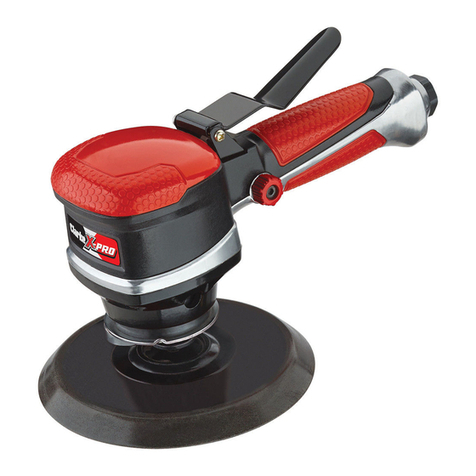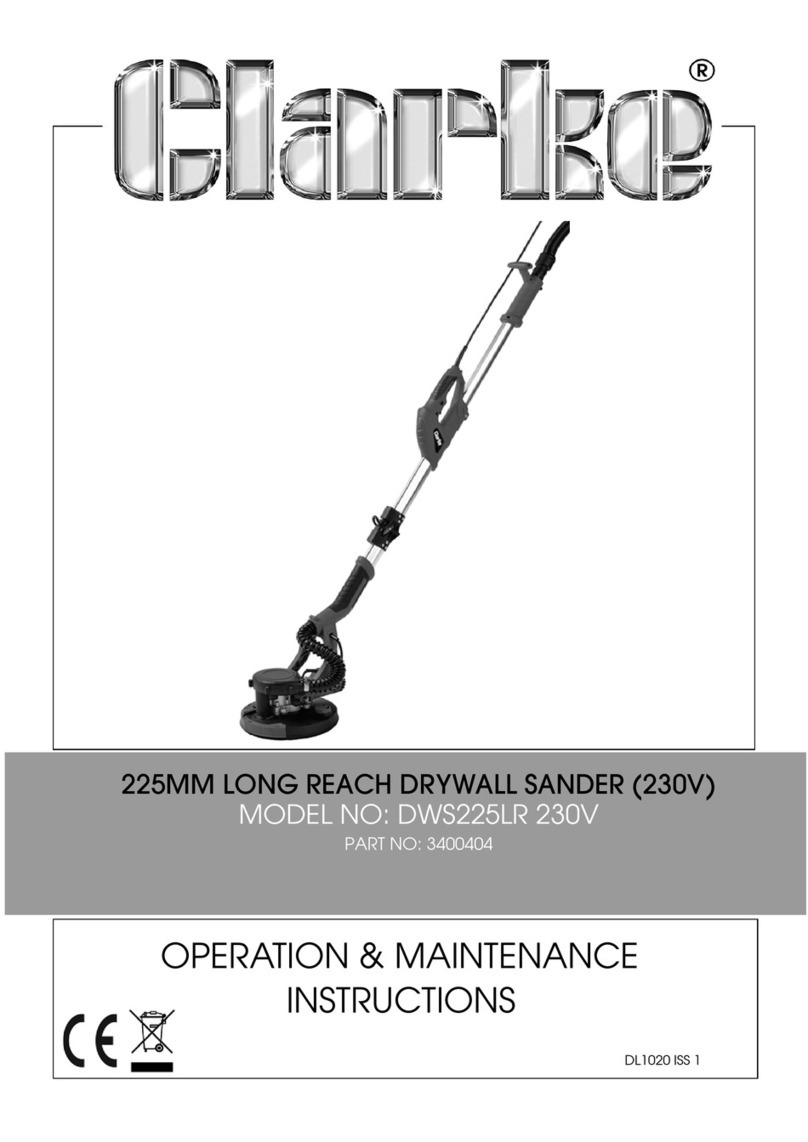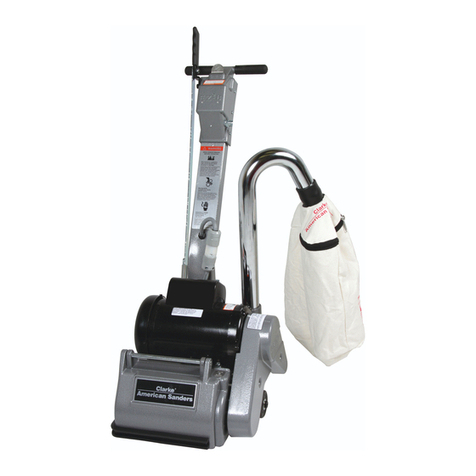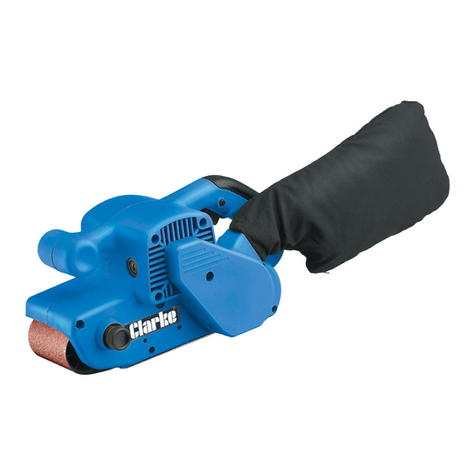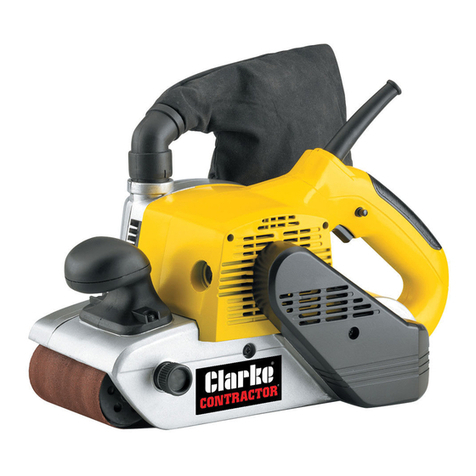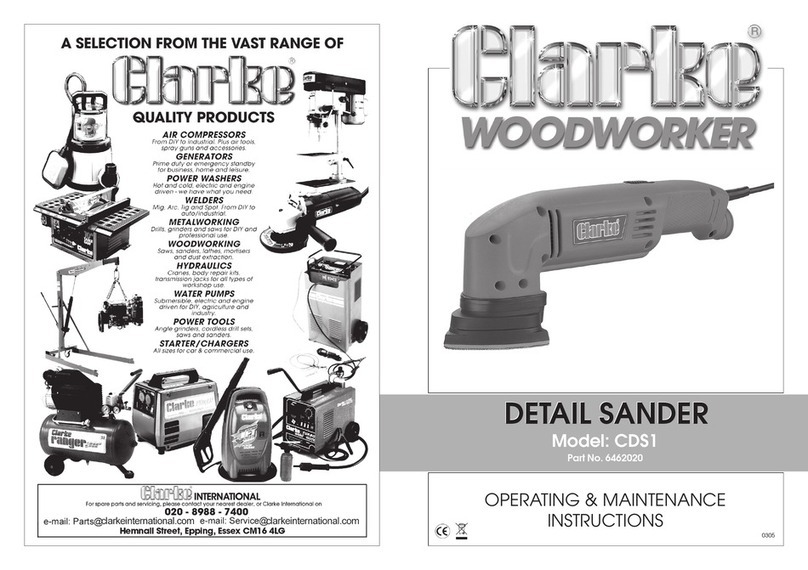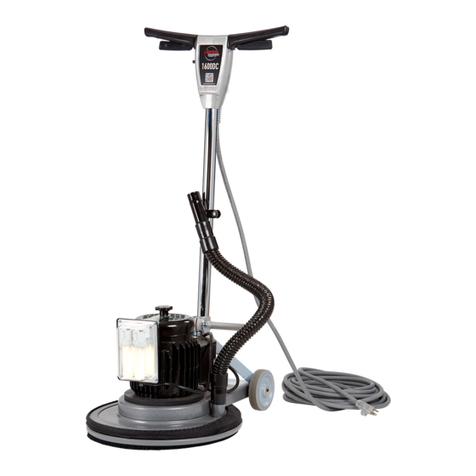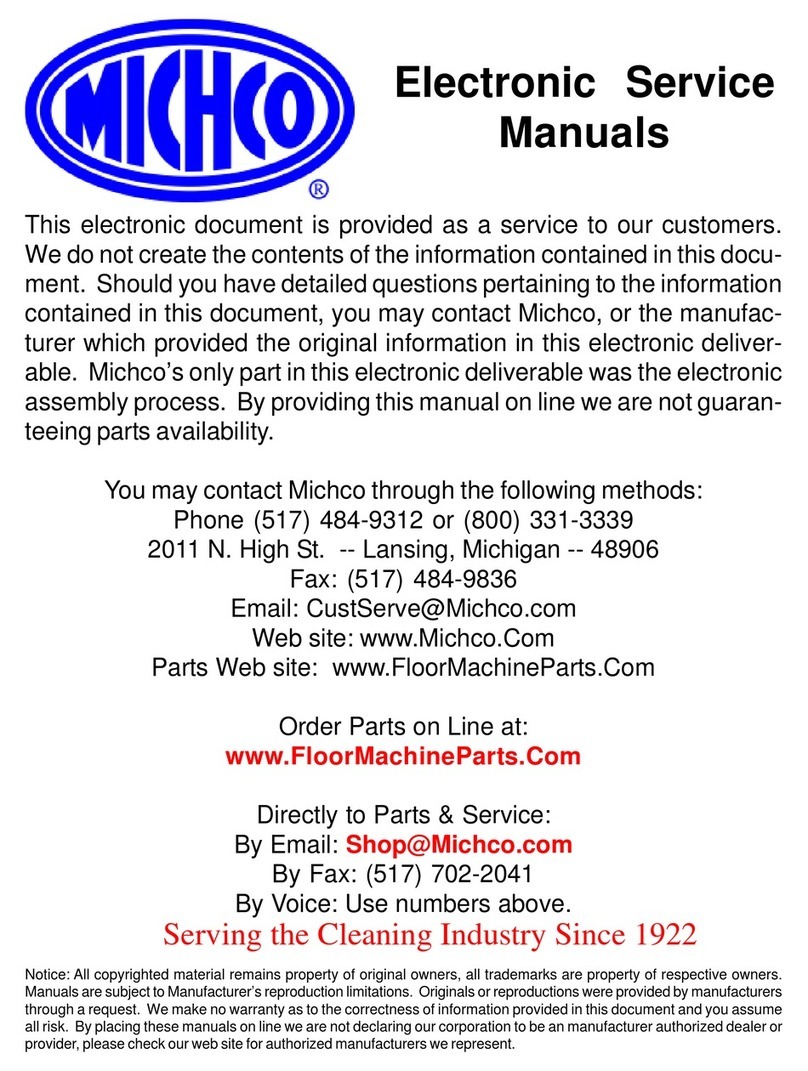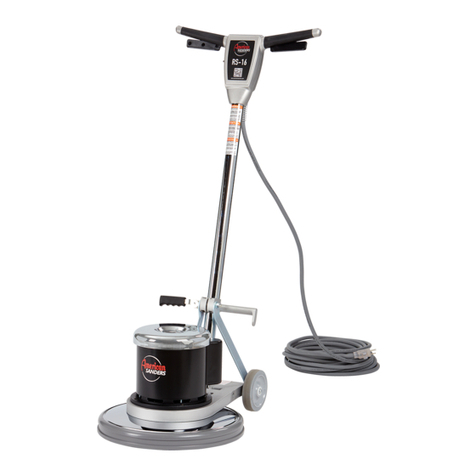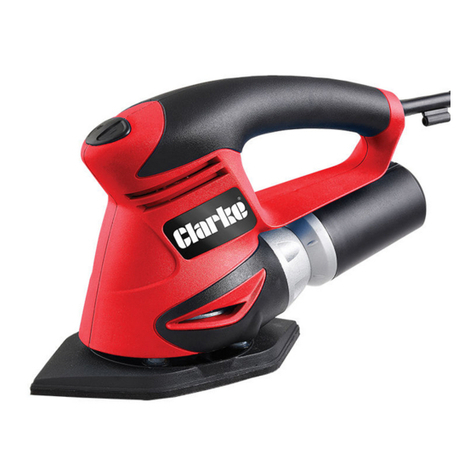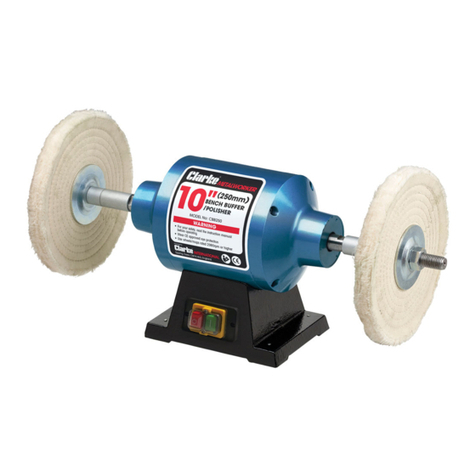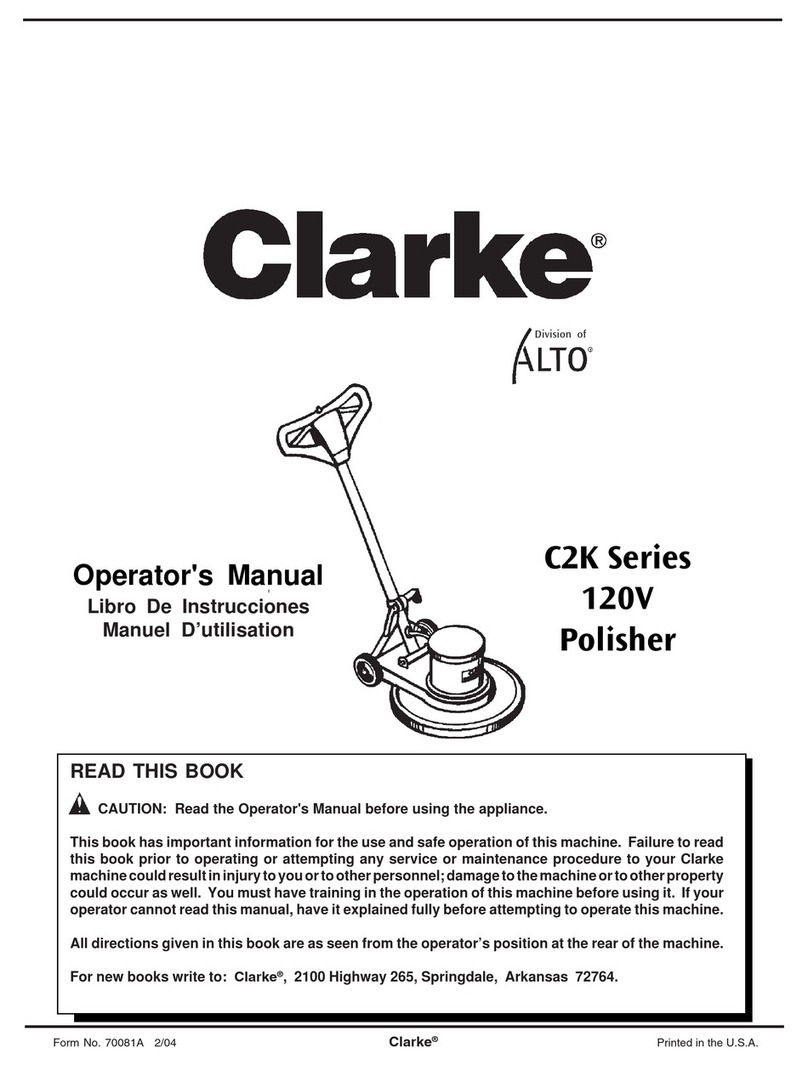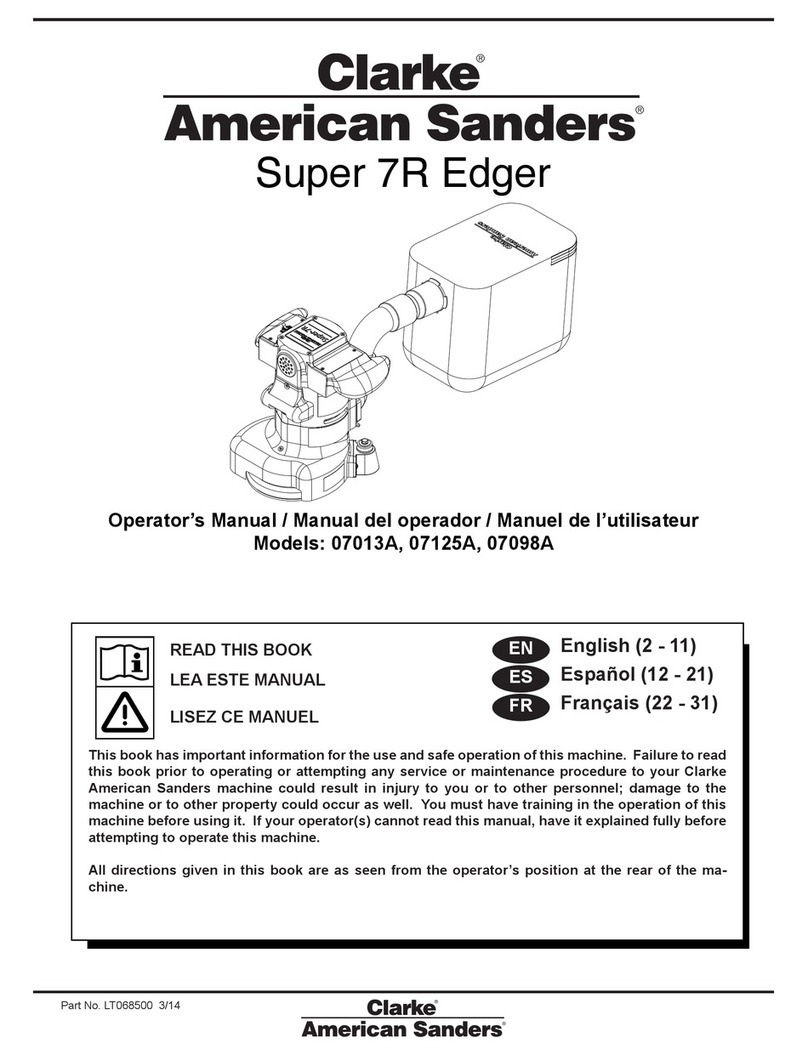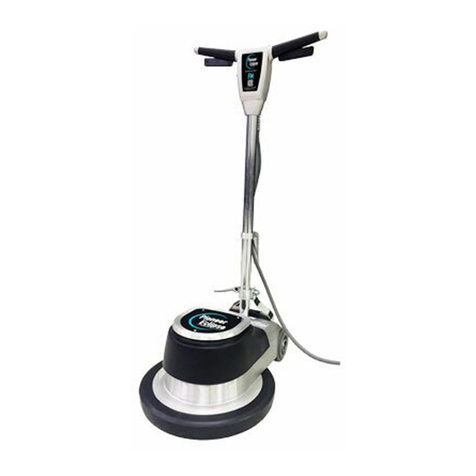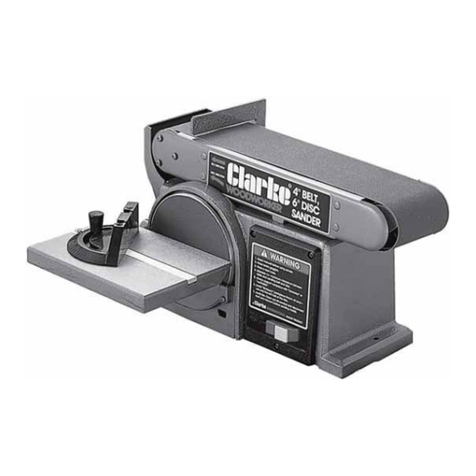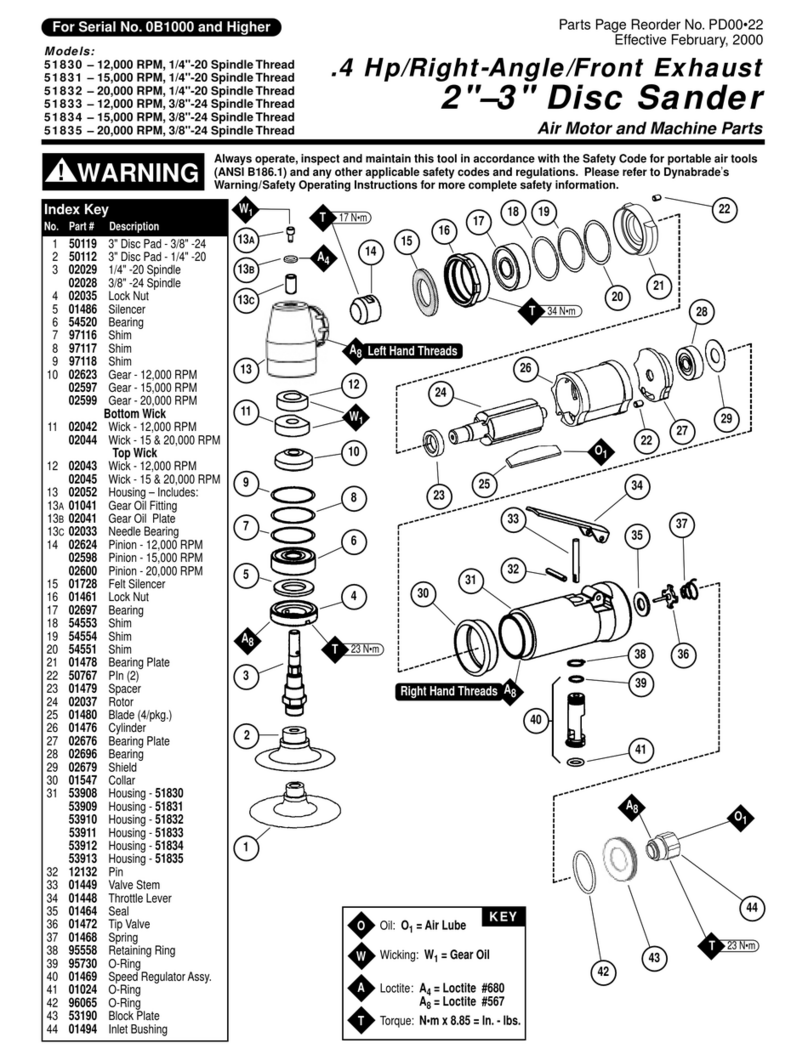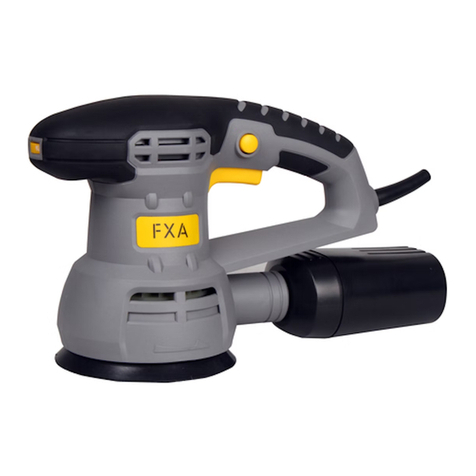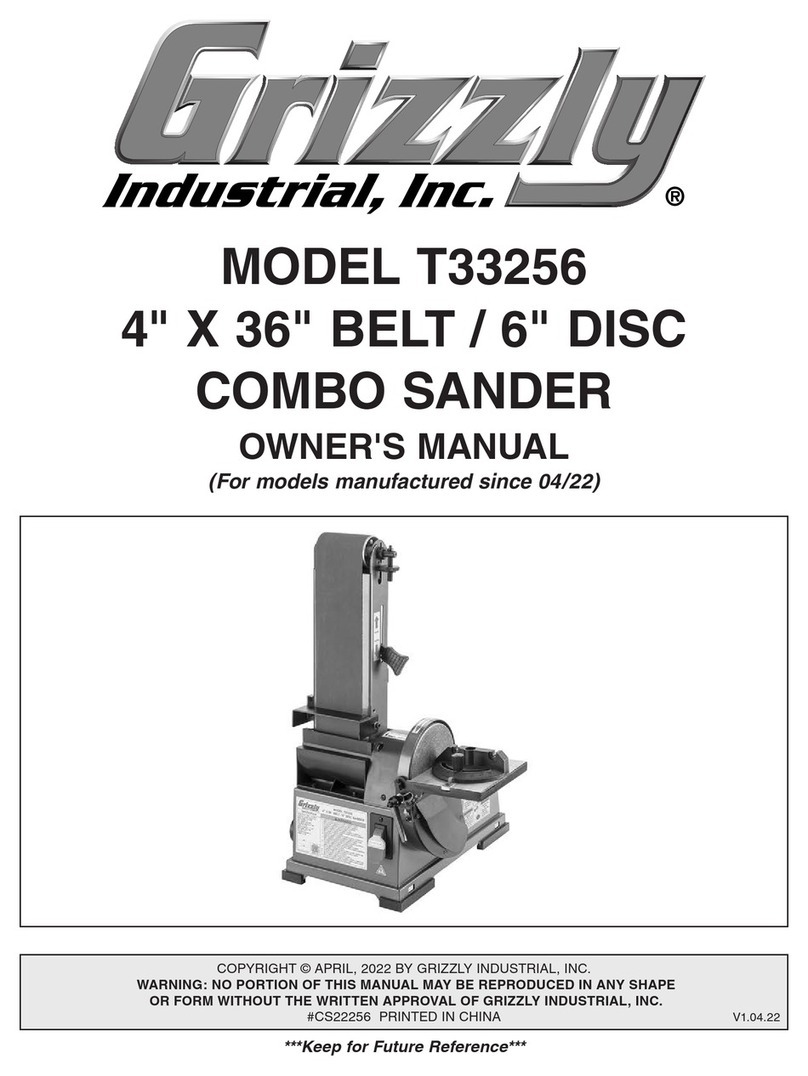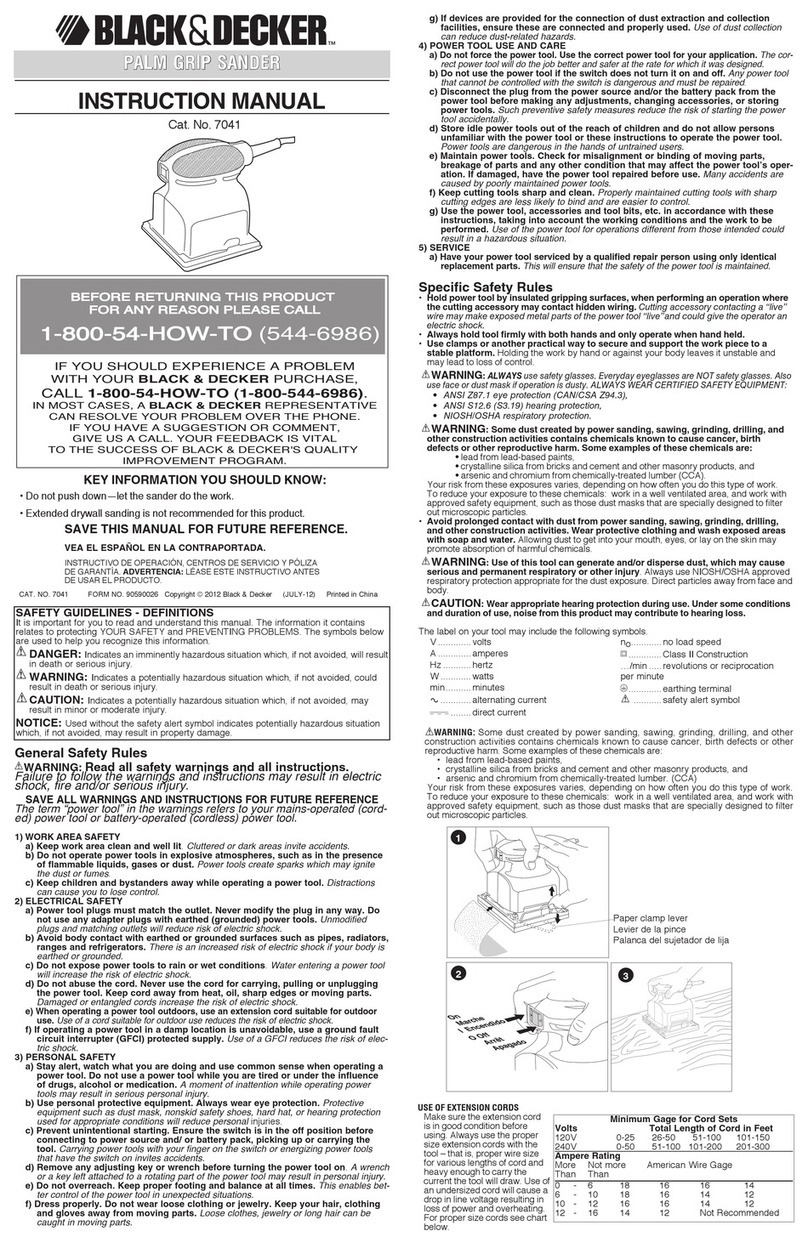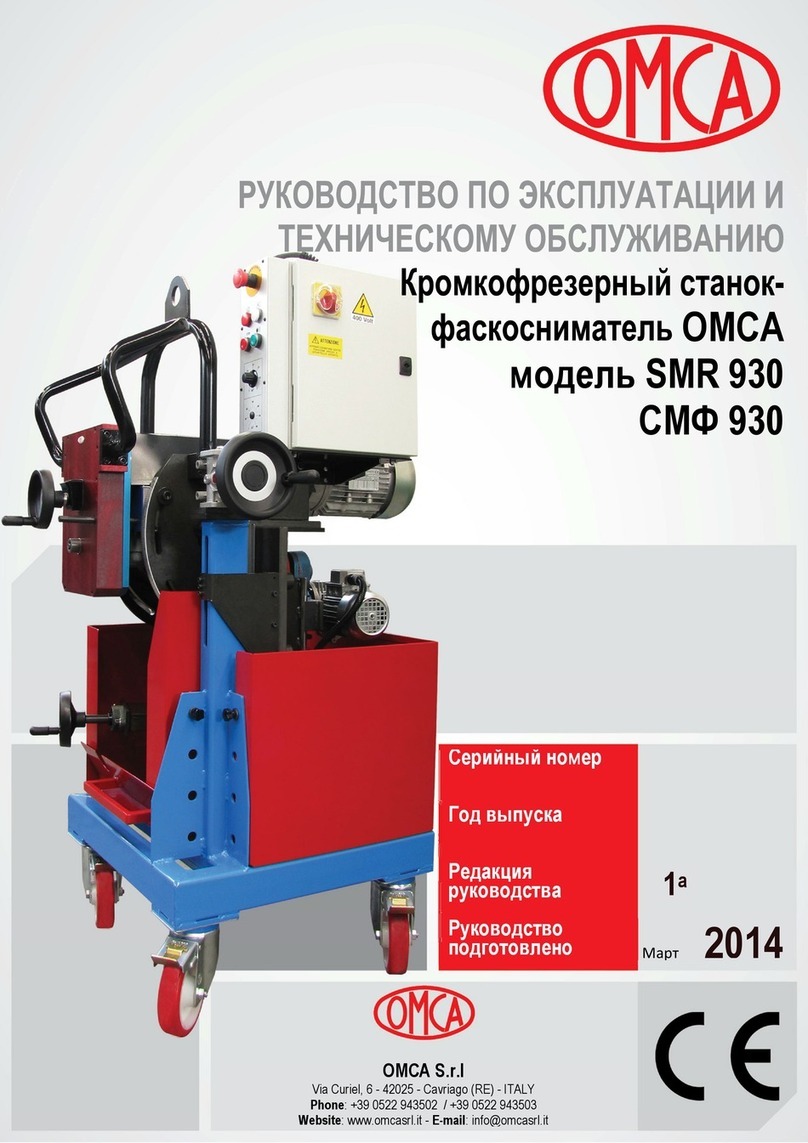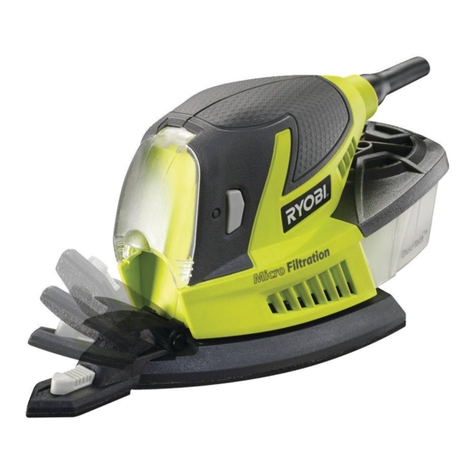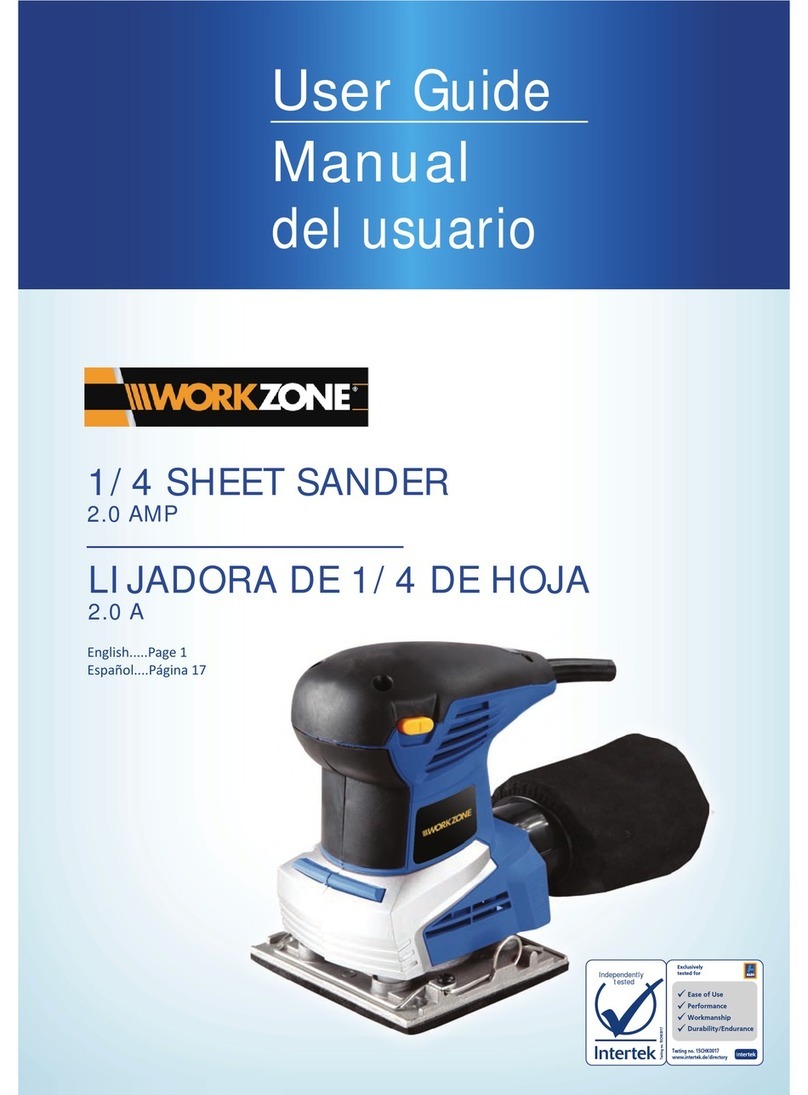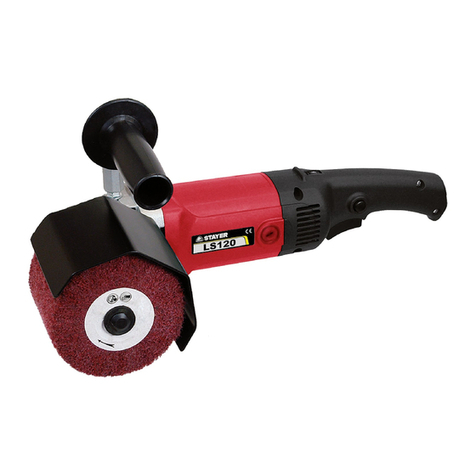14.
AL WAYS
wear proper apparel. Loose clothing or jewellery may
get caught in mo ing parts. Wear protecti e hair co ering
to contain long hair .
15.
ALWAYS
use recommended accessories, the use of improper
accessories could be hazardous.
16.
AL WAYS
remo e plug from electrical outlet when adjusting,
changing parts or working on the machine.
17.
NEVER
operate machine while under the influence of drugs, alcohol or any medication.
18.
NEVER
lea e machine running unattended, turn power off.
Do not lea e the machine until it comes to a complete stop.
19.
NEVER
force the machine, it will do a better and safer job at
the rate for which it was designed.
20.
NEVER
use power tools in damp or wet locations or expose
them to rain. Keep your work area well illuminated.
21
DO NOT
use in explosi e atmosphere (around paint,
flammable liquids etc). A oid dangerous en ironment.
ADDITIONAL PRECAUTIONS FOR VERTICAL SANDER
1.
ALWAYS
use genuine replacement sanding slee es.
2.
DO NOT
use the machine if the electric cable, plug or motor is in poor condition.
3.
DO NOT
let the entilation slots in the machine become blocked.
4. Replacement sanding slee es are a ailable from your CLARKE dealer .
5. Ensure the sanding slee e is fully secured before use.
6. Switch the machine OFF immediately the task is completed.
7. Ne er stand on the machine. serious injury could occur if the machine is tipped o er.
8. Sanding of Lead based paint is not recommended, contaminated dust could result
in lead poisoning.
Additionally, please keep these instructions in a safe place for future reference.
OPERATION
Before starting the machine, AL WAYS inspect for damaged or worn parts etc. Any defects
should be rectified before continuing. Also ensure the machine table is completely clear,
i.e. there are no tools etc left on the machine that could come into contact with the
sanding slee e when the machine is switched ON, this could cause the tool to fly off, and
possibly lead to personal injury.
The sander is designed for use with wood and plastic materials ONLY . Sanding metal and
abrasi e materials could be hazardous.
Before starting work, select the correct size arbor and sanding slee e for the work to be
carried out, and fit as explained on page 9.
Sanding
1. To switch ON, press the switch co er (see fig. 9) in and
slide in direction of arrow, this will expose the ON/OFF
buttons, Push the ON button, (green button I). DO
NOT close the co er as this will switch the machine OFF
again.
NOTE : in case of emer ency, close the switch cover quickly,
cover will latch down and motor will be switched OFF. To
switch OFF normally, press OFF button, (red button O),
always close cover to prevent accidental startin .
2. Allow the motor to reach full speed before offering work to the sanding slee e.
3. Once the machine has reached full speed, slowly offer the workpiece to the sanding
slee e.
NOTE: the sandin sleeve rotates in a clockwise direction, therefore the workpiece should
be worked from ri ht to left, otherwise if fed from the other direction, the rotation force,
tends to throw the material away from the sandin sleeve.
MAINTENANCE
Clean the machine regularly using soft brush and clean cloth only.
Always inspect the tool before use, and ensure it is in top condition.
Ensure all air ents are clear.
Check the power cable to ensure it is sound and free from cracks, bare wires etc.
A oid using sol ents when cleaning plastic parts, most plastics are susceptible to damage
from the arious types of commercial sol ents.
All bearings etc, in this tool are lubricated with a sufficient amount of high grade lubricant
for the tools lifetime under normal operating conditions, therefore no further lubrication is
required.
DUST EXTRACTION
The sander is pro ided with a dust extraction facility, where a acuum extractor may
be connected to the 50mm outlet at the rear of the machine, note howe er, that this
does not preclude the user from wearing a face mask to pre ent the inhalation of dust
particles.
It is an EEC requirement that a dust extraction facility be pro ided on power tools,
howe er, due to the nature of the tool, some of the dust produced will be forced into the
surrounding atmosphere, and will not be collected.
Fig. 9
-5- -10-
